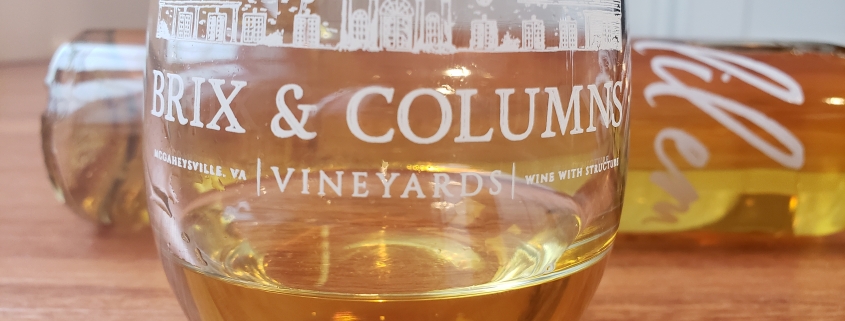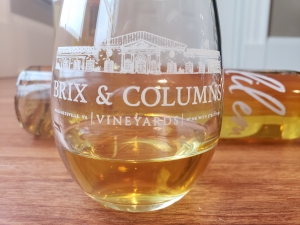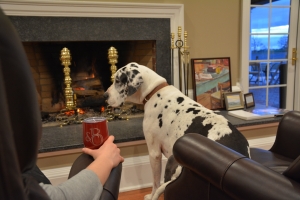The Making of Dessert Wines
It’s hard to believe that our vineyard finally has something on the menu that is as sweet as I am. When we released our dessert style Petit Manseng, Lil Em, last week, I have to admit that I didn’t know a lot about dessert style wines. Over the past week, I have undergone an investigation, and I have sniffed out enough information to share a basic understanding with you. Much like me, dessert style wines are highly sought after and popular with most palates.
Petit Manseng is an ideal grape for making dessert wine: it has a longer than average ripening season, it is high in acid, it is thick-skinned, and it grows in loose bunches on the vine. All of these elements combine to make a grape that is perfect for late-harvesting. When grapes are harvested past the ideal picking season, they begin to shrivel on the vine. A process called passerillage by French grape growers, this drying on the vine helps to concentrate all of the flavors, aromas, and sugars. Because the grapes are so loosely bunched, Petit Manseng is able to escape fungus infestation better than other varieties. When the climate doesn’t allow a late harvest, vineyards can also choose to pick grapes at their prime harvest time and dry them before pressing them for juice. You can learn more about this grape by clicking here.
Another option for producing dessert style wines is to do an ice harvest. In this method, grapes hang on the vine past harvest time waiting for the first frost of the season. When the frost hits, the grapes are picked before dawn and pressed before they can thaw. The lower moisture content of these grapes helps to concentrate the flavors even more than typical late harvest grapes, and ice wines are often some of the sweetest dessert wines on the market.
The final and most prestigious method of making dessert style wines is by hoping/allowing your grapes to get Noble Rot. In this method, the Botrytis Cinere bacteria infects the grapes and thins the skins until they are porous. The water evaporates through the holes in the skin, and the remaining fruit has more concentrated aromas, acids, and sugars. Characterized by tastes of ginger and honey, wines that are made via this method are typically higher in cost since the risk factor is large, and the vines produce less juice this way than normal. On average a vine might produce one glass of wine via this method versus 2-3 bottles of dry wine using typical methods.
Dessert wines are sweeter not just because of the harvesting methods, but also because the fermentation of sugar into alcohol is stopped before the majority of sugar is changed over. This process can be halted in one of two ways: the wine can be fortified with brandy or it can undergo a super-cooling. Both of these methods produce an environment in which yeast can’t survive. The actual term dessert wine can be used to refer to any wine that has an alcohol percentage of 14% or higher and it is typically used to describe fortified wines such as our Six Penny Postscript Port Style. Because our Lil Em is 11.5% alcohol, we call it a dessert style instead.
All dessert and dessert-style wines pair best with foods that are as sweet or even sweeter than the wines themselves. They also pair well with foods that are salty enough to combat the sweetness of the wine. Me, on the other hand, I pair well with anything, but especially with those two chairs by the fireplace!






